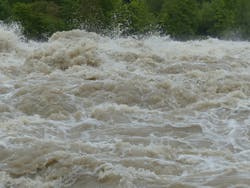Cities need to step up flood mitigation efforts to save lives
Recent storms such as Hurricanes Ida and Henri that claimed dozens of lives due to flooding point to the need for cities to increase efforts to stem the impact of heavy rainfall.
The recent storms support the notion that climate change is making the impact of large storms worse. The atmosphere holds more water as temperatures rise. The air becomes 4% more saturated with water for every 1-degree Fahrenheit that the planet warms. Thus, the heaviest downpours in the Northeast now drop 55% more rain compared to those events in the 1950s, according to the most recent National Climate Assessment.
Better data about flood risks could help cities make massive rainfall events less deadly, but data gathering has not kept up with the latest conditions. The Federal Emergency Management Administration’s flood maps are outdated and don’t account for the kind of flooding directly caused by extreme rainfall.
Cities must upgrade urban stormwater infrastructure including street-level drains, concrete sewers that can capture and hold water, roadside ditches, and flood-control reservoirs to cope with the new reality. In addition, more green spaces could help absorb some rainfall, preventing it from entering drains. These steps can help, but it remains to be seen if it is even possible to engineer our way to 100% protection against flooding.
